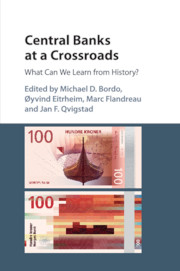Crossref Citations
This Book has been
cited by the following publications. This list is generated based on data provided by Crossref.
Turner, John D.
2018.
An Economist’s Guide to Economic History.
p.
63.
Knežević, Ivana
Todorović, Marija
and
Obradović, Vladimir
2018.
Upravljanje projektima - kancelarija za upravljanje projektima u funkciji korporativnog upravljanja u centralnim bankama.
Vojno delo,
Vol. 70,
Issue. 4,
p.
414.
Farina, Vincenzo
Galloppo, Giuseppe
and
Previati, Daniele A.
2019.
Frontier Topics in Banking.
p.
189.
Mee, Simon
2019.
Central Bank Independence and the Legacy of the German Past.
Vercelli, Alessandro
2019.
Finance and Democracy.
p.
31.
Carboni, Marika
Farina, Vincenzo
and
Previati, Daniele A.
2020.
Banking and Beyond.
p.
9.
James, Harold
2020.
Making a Modern Central Bank.
2021.
The Financial Crisis of 2008.
p.
408.
do Vale, Adriano
2021.
Central bank independence, a not so new idea in the history of economic thought: a doctrine in the 1920s.
The European Journal of the History of Economic Thought,
Vol. 28,
Issue. 5,
p.
811.
Wigmore, Barrie A.
2021.
The Financial Crisis of 2008.
2021.
Monetary War and Peace.
p.
281.
Bignon, Vincent
and
Sicsic, Pierre
2022.
Quelles leçons de l’histoire ? ou comment faire face aux fortes augmentations de dette publique ?.
Revue d'économie financière,
Vol. N° 146,
Issue. 2,
p.
41.
2025.
Capital in Banking.
p.
209.



